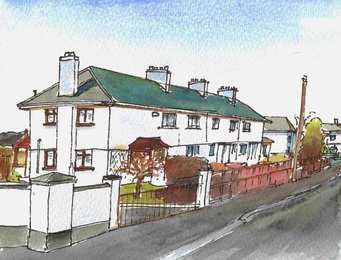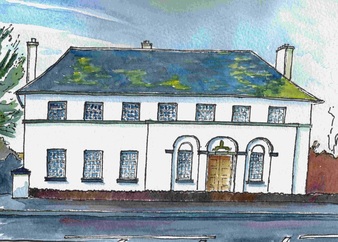War and Partition
|
The Edwardian period came to a sudden halt with the First World War. Industrial production boomed during the war only to decline dramatically afterwards, followed by a slow decline. ‘Homes for Heroes’ was a rallying cry at the end and some effort was put into building new houses for former soldiers. Conditions in the working class areas of the city remained very poor however. The houses in Messines Park are an example of the type. These were built in 1925 shortly after the partition of the Island into two jurisdictions in 1922.
In a similar style are the police stations build across Northern Ireland by the new authority. These were designed by TFO Rippingham in a conservative classical style popular across the UK at the time which was known as Neo Georgian. Eglinton police station, near to the city is a good example. The war memorial by Vernon Marsh is located on the centre of the Diamond and was erected in 1928. It is a very dramatic structure with vigorous bronze statues of a soldier and a sailor balancing a central statue of ‘victory. She holds aloft a laurel wreath with a sword pointing down in her other hand. As a composition it is quite conservative but it has a strength and presence which is appropriate for the centre of such a large civic space. It perhaps could be argued that it displays Art Deco influences in the varying planes and stripped back classicism of its plinth. The coming of the cinema and the curvilinear ‘moderne’ style associated with many of the American movies translated easily into a number of Art Deco inspired picture houses. These are all now demolished but Craigavon Bridge, named after the first Prime Minister of Northern Ireland, and finished in 1936, has some details in the style. The light standards in particular, which line the upper deck, could have been designed in no other period. |
|





